-

Yto Barrada, Le rose n’est pas rose, Yto Barrada selon Yasmine Seale | via Fondation Pernod Ricard,
-

MARWAN, À la Fondation Giacometti, le troublant face-à-face entre le sculpteur et le peintre Marwan by Laurent Boudier | via Télérama,
-

Tarik Kiswanson, The 10 Best Paris Art Shows of 2025 by Eurídice Arratia | via Hyperallergic,
-

Yto Barrada, Bursting at the Seams: Yto Barrada at South London Gallery by Elise Morton | via Canvas,
-

Dana Awartani, The 8 Exhibitions to See in December 2025 | via ArtReview,
-

Lawrence Abu Hamdan, Akram Zaatari, The Soundscape of Genocide in Gaza by Ellie Armon Azoulay | via Hyperallergic,
-

Dr. Andrée Sfeir-Semler, Wael Shawky, Power 100. The annual ranking of the most influential people in art by ArtReview | via ArtReview,
-

Etel Adnan, Reconsidering Apocalypse: Etel Adnan and the Horizon by Rana Barakat | via e-flux,
-

Samia Halaby, Samia Halaby has not forgotten Jaffa! by Rima Al Nakhl | via al-akhbar,
-

Lawrence Abu Hamdan, Lawrence Abu Hamdan “Zifzafa” at MUNCH, Oslo | via Mousse Magazine,
-

Sung Tieu, Artist Sung Tieu Sells Work to Fund New Board Member for Berlin’s KW Institute by Harrison Jacobs | via ARTnews,
-

Tarik Kiswanson, Tarik Kiswanson at the Swedish Institute: Exile, Memory & Steinway’s Victory Vertical Pianos by Lise Guéhenneux | via Crash Magazine,
-

Dana Awartani, Craft As Resistance: An Interview with Dana Awartani by Eve Rogers | via Berlin Art Link,
-

Sung Tieu, Sung Tieu: Meisterin der latenten Verknüpfungen by Irène Unholz | via Kunstbulletin,
-

Khalil Rabah, 18th Istanbul Biennial by Kaya Genç | via Artforum,
-

Lawrence Abu Hamdan, Lawrence Abu Hamdan in Oslo – Kampf gegen Windmühlen by Tobi Müller | via Monopol,
-

Dana Awartani, Dana Awartani to represent Saudi Arabia at 2026 Venice Biennale | via Artforum,
-

Dana Awartani, Exclusive: Dana Awartani to represent Saudi Arabia at Venice Biennale 2026 by Melissa Gronlund | via The Art Newspaper,
-

Sung Tieu, 10 Highlights der Kölner Messerwoche by Elke Buhr | via Monopol,
-

Lawrence Abu Hamdan, Interview by Christabel Stewart | via TANK Magazine,
-

Yto Barrada, An Introduction to Yto Barrada’s ‘Thrill, Fill and Spill’ | via ArtReview,
-

Wael Shawky, shortlisted for Artist of the Year | via Apollo Magazine,
-

Tarik Kiswanson, Tarik Kiswanson “The Relief” at Institut suédois, Paris | via Mousse Magazine,
-

Sung Tieu, Sung Tieu’s “Bleed” by Aoife Rosenmeyer | via e-flux,
-

Lawrence Abu Hamdan, Lawrence Abu Hamdan’s Latest Exhibition Brings the Blast of Golan Heights Wind Turbines to Oslo by Chris Erik Thomas | via ARTnews,
-

Dana Awartani, Soothing Balm: Dana Awartani at Arnolfini by Leila Lebreton | via Canvas,
-

Samia Halaby, ‘Everyone’s become more extreme’ by Arwa Mahdawi | via The Guardian,
-

Mounira Al Solh, Dancing with Ritual – Mounira Al Solh at Bonnefanten Museum by Nat Muller | via metropolis,
-

Dana Awartani, Standing by the ruins by Oliver Basciano | via e-flux,
-
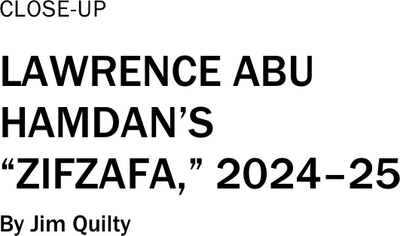
Lawrence Abu Hamdan, Lawrence Abu Hamdan's "Zifzafa" (2024-25) by Jim Quilty | via Artforum,
-

Mounira Al Solh, Versehrte Heldinnen by Saskia Trebing,
-

Mounira Al Solh, Contemporary embroidery with surprising conceptual heft by Emma Crichton-Miller | via Financial Times,
-
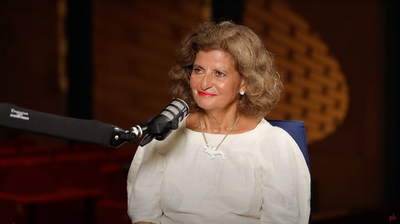
Dr. Andrée Sfeir-Semler, From Kiel to Beirut: Andrée Sfeir-Semler’s Journey by Ricardo Karam | via youtube,
-
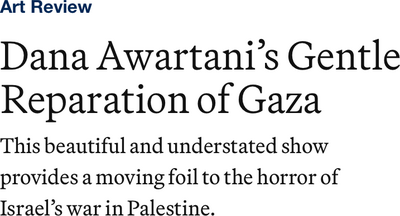
Dana Awartani, Gentle Reparation of Gaza by Anna Souter | via Hyperallergic,
-

MARWAN, the art of exile by Jessica Lack | via Christie´s,
-

Walid Raad, Trellis Art Fund Names 2025 Milestone Grant Recipients by News Desk | via Artforum,
-

Dana Awartani, ‘It’s important to talk about these things’ by Steven Morris | via The Guardian,
-

Dineo Seshee Bopape, Zürich Art Weekend by Orit Gat | via e-flux,
-
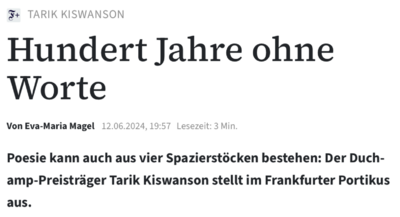
Tarik Kiswanson, Hundert Jahre ohne Worte by Eva-Maria Magel | via Frankfurter Allgemeine,
-

Mounira Al Solh, Dancing on the Ruins, a short documentary about and with Mounira Al Solh by Bibi Fadlalla | via Ammodo Docs,
-

Sung Tieu, Everything or Nothing at Sfeir-Semler Gallery Hamburg by Abhijan Toto | via Artforum,
-

Sung Tieu, Henrike Naumann & Sung Tieu to represent Germany at 2026 Venice Biennale | via Institute for Foreign Cultural Relations,
-

Lawrence Abu Hamdan, ‘Someone Chewing‘ LAWRENCE ABU HAMDAN listens in on the ‘lords of sound’ by Jim Quilty | via L´Orient Today,
-
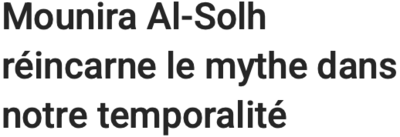
Mounira Al Solh, Mounira Al-Solh réincarne le mythe dans notre temporalité by Briac Saint Loubert Bié | via agenda culturel,
-
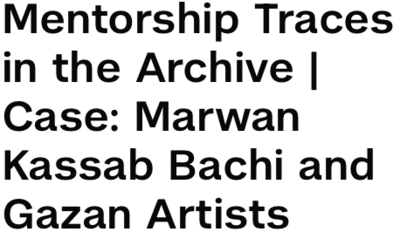
MARWAN, Mentorship Traces in the Archive | Case: Marwan Kassab Bachi and Gazan Artists by Ala Younis,
-

Rayyane Tabet, "12 Standouts at the 2022 Whitney Biennial" by Maximilíano Durón | via ARTnews,
-

Akram Zaatari, Akram Zaatari’s infinite frames by Taous Dahmani | via Dazed,
-

Yto Barrada, “DEADHEAD” at Fondazione Merz, Turin | via MOUSSE,
-

Yto Barrada, Yto Barrada’s Investigations into Colour and Craft by Giovanna Manzotti | via FRIEZE,
-

Lawrence Abu Hamdan, Walid Raad, The Atlas Group, The 100 Best Artworks of the 21st Century by the Editors of ARTnews, Art in America | via ARTnews,
-
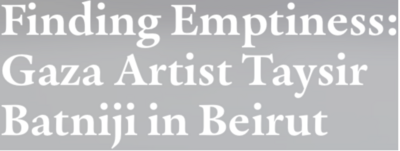
Taysir Batniji, Finding Emptiness: Gaza Artist Taysir Batniji in Beirut by Jim Quilty | via The Markaz Review,
-

Alia Farid, When the Path Runs Out by Christian House | via canvas,
-
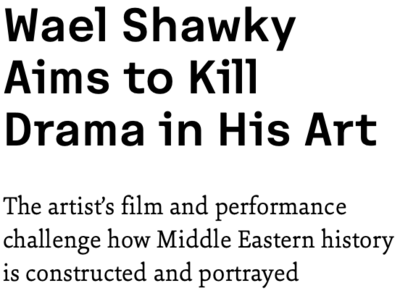
Wael Shawky, Wael Shawky Aims to Kill Drama in His Art by Rahel Aima | via FRIEZE,
-

Akram Zaatari, Pretend same-sex marriages, a bomb explosion and a jealous husband: the legacy of a legendary Arab photo studio by Dalia Al-Dujaili | via British Journal of Photography,
-

Dana Awartani, A Continuum of Care and Conscience finds Cognisance in Dana Awartani’s Eclectic Art by Dilpreet Bhullar | via icon,
-

Lawrence Abu Hamdan, ‘To cough was to risk death’: the artist who mapped Syria’s Sednaya prison with testimonies from its survivors by Lawrence Abu Hamdan | via The Guardian,
-

Yto Barrada, Yto Barrada to represent France at 2026 Venice Biennale by Alexandre Crochet | via The Art Newspaper,
-
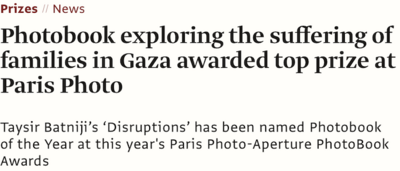
Taysir Batniji, Photobook exploring the suffering of families in Gaza awarded top prize at Paris Photo by Simon Bainbridge | via The Art Newspaper,
-

Khalil Rabah, Terra Infirma: Khalil Rabah at Brief Histories by Osman Can Yerebakan | via Canvas,
-
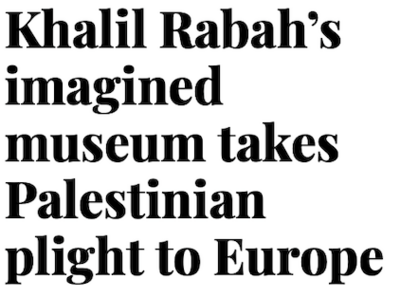
Khalil Rabah, Khalil Rabah's imagined museum takes Palestinian plight to Europe by Maggie Ghali | via The National,
-

Etel Adnan, Sea and Fog | via e-flux,
-

Christine Streuli, Christine Streuli im Gespräch mit Sabine Schaschl by Sabine Schaschl | via Museum Haus Konstruktiv,
-

Alia Farid, "Alia Farid: Bneid Al Gar" at Henie Onstad Kunstsenter, Høvikodden | via Mousse Magazine,
-

Rabih Mroué, Exploring the Roots of Mideast Turbulence Onstage by Laura Cappelle | via The New York Times,
-
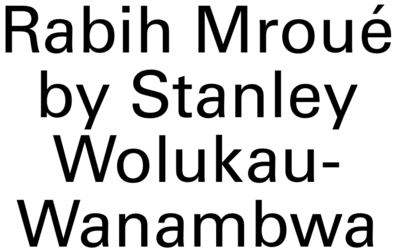
Rabih Mroué, Interview with Stanley Wolukau-Wanambwa | via BOMB,
-
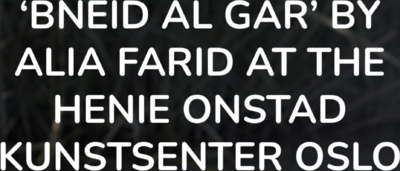
Alia Farid, ‘Bneid Al Gar’ | via Selections Magazine,
-
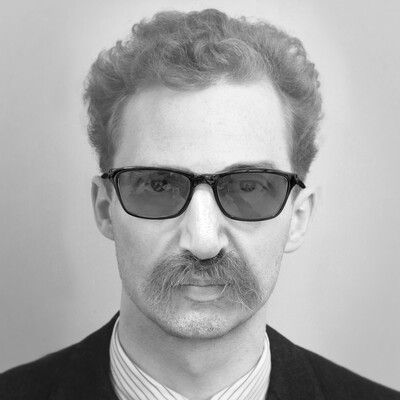
Walid Raad, Walid Raad named Professor of Photography at Bard College Beginning Fall 2024 | via Bard,
-
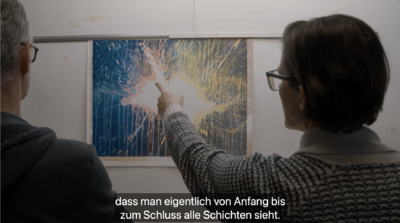
Christine Streuli, Schritt für Schritt zum kraftvollen Gesamtbild by Pascal Trüb | via Züricher Kantonalbank,
-

Tarik Kiswanson, Crossing: Tarik Kiswanson in conversation with Asad Raza by Mousse | via MOUSSE,
-
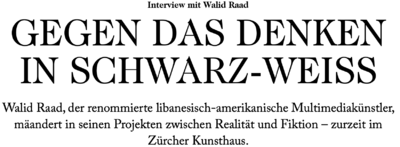
Walid Raad, Interview mit Walid Raad. Gegen das Denken in Schwarz-Weiss by Brigitte Ulmer | via Bolero Magazin,
-
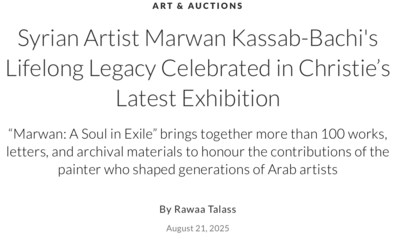
MARWAN, Syrian Artist Marwan Kassab-Bachi's Lifelong Legacy Celebrated in Christie’s Latest Exhibition by Rawaa Talass | via Architectural Digest Middle East,
-

Walid Raad, Another Festival of (In)gratitude | via e-flux,
-

Wael Shawky, An Egyptian Artist Mesmerizes in Venice With an Opera and a Donkey by Aruna D’Souza,
-
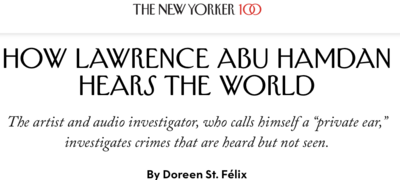
Lawrence Abu Hamdan, How Lawrence Abu Hamdan Hears the World by Doreen St. Félix | via The New Yorker,
-
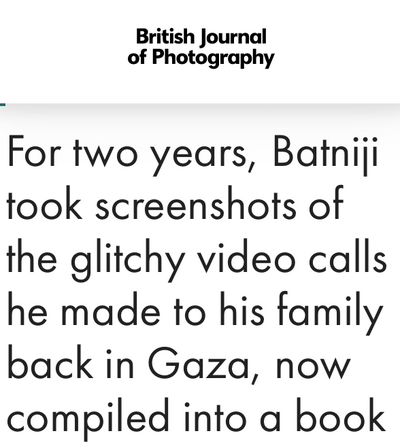
Taysir Batniji, Taysir Batniji commemorates pre-war Gaza via ‘poor images’ by Diane Smyth | via British Journal of Photography,
-

Wael Shawky, The Best Booths at Art Basel, From a Revisionist ‘Origine du Monde’ to Jellyfish-Like Creatures by Sarah Belmont | via ARTnews,
-
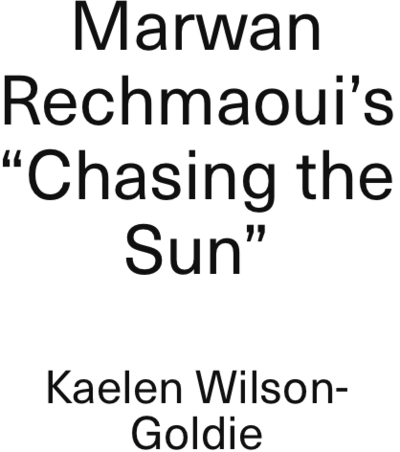
Marwan Rechmaoui, Chasing the Sun by Kaelen Wilson-Goldie | via e-flux,
-
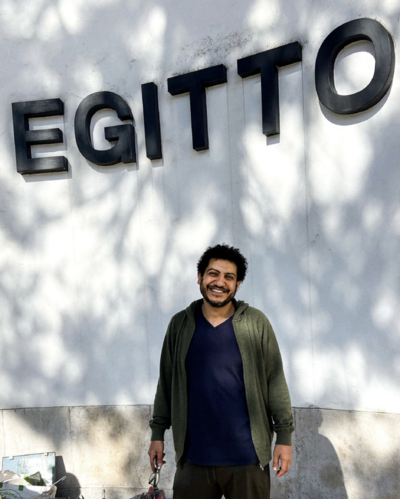
Wael Shawky, Venice Biennial 2024: WAEL SHAWKY represents Egypt with 'Drama 1882' | via La Biennale di Venezia,
-
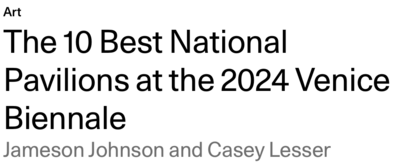
Mounira Al Solh, The 10 Best National Pavilions at the 60th Venice Biennale by Casey Lesser | via Artsy,
-

Mounira Al Solh, The 10 Best National Pavilions at the Venice Biennale by Alex Greenberger | via ARTnews,
-

Wael Shawky, Here Are 7 Standout Pavilions at the 2024 Venice Biennale by Naomi Rea | via artnet,
-
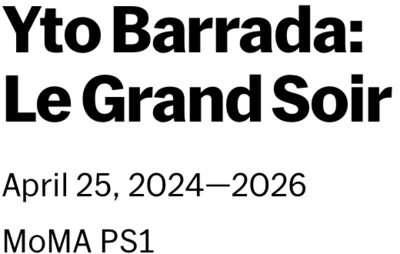
Yto Barrada, On view: Yto Barrada's large-scale installation "Le Grand Soir" at MoMAPS1 | via MoMa,
-

Mounira Al Solh, Myths, history and trauma haunt Lebanon’s pavilion by Rachel Spence | via Financial Times,
-

Alia Farid, Alia Farid Captures the Daily Life of Puerto Rico’s Palestinian Community by Fernanda Brenner | via Frieze,
-

Mounira Al Solh, A Dance with her Myth | via e-flux,
-

Rayyane Tabet, What’s a Museum For? by J.J. Charlesworth | via ArtReview,
-

Wael Shawky, unveils his Venice Biennale project | via Art Basel,
-

Rayyane Tabet, The Deep Blue: Rayyane Tabet at Mudam by Will Jennings | via canvas,
-

Marwan Rechmaoui, Chasing the Sun by Marwan Rechmaoui at Sfeir-Semler Downtown, Beiru | via Selections,
-

Tarik Kiswanson, THE UNFINISHED BUSINESS OF SENTIMENTALITY by Ana Teixeira Pinto | via Texte zur Kunst,
-

Yto Barrada, The Interview by Jenny Wu | via ArtReview,
-

Dana Awartani, From Saudi Arabia to Venice by Rebecca Anne Proctor | via Arab News,
-

Mounira Al Solh, Mounira Al Solh’s handmade tales of displacement by Jim Quilty | via L´Orient Today,
-
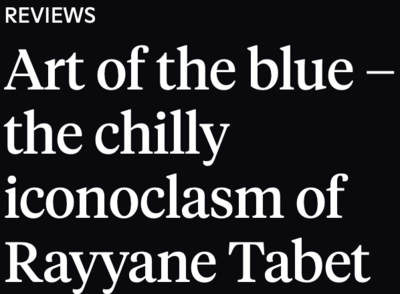
Rayyane Tabet, Art of the blue – the chilly iconoclasm of Rayyane Tabet by Digby Warde-Aldam | via Apollo,
-

Wael Shawky, The Strata of Life: Wael Shawky at Sfeir-Semler Gallery by Maghie Ghali | via canvas,
-
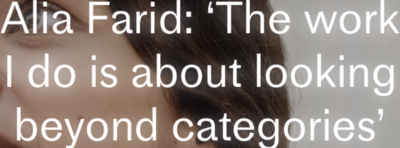
Alia Farid, "The work I do is about looking beyond categories" by Stephanie Bailey | via Ocula,
-

Etel Adnan, Ithra exhibition honors late Lebanese-American artist Etel Adnan | via Arab News,
-

Taysir Batniji, Taysir Batniji exprime, à travers son art, ce que les mots ne peuvent pas dire… by Gilles Khoury | via L´Orient Le Jour,
-
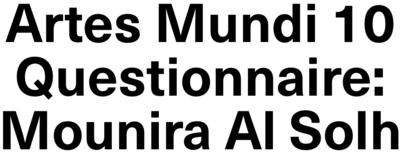
Mounira Al Solh, Artes Mundi 10 Questionnaire: Mounira Al Solh | via ArtReview,
-
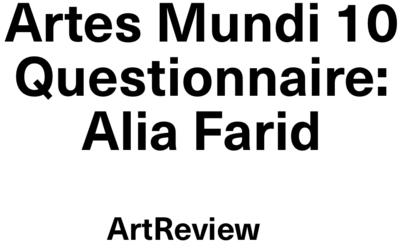
Alia Farid, Artes Mundi 10 Questionnaire: Alia Farid | via ArtReview,
-

Alia Farid, On the impact of extractive industries in Iraq and Kuwait by Louisa Buck | via The Art Newspaper,
-
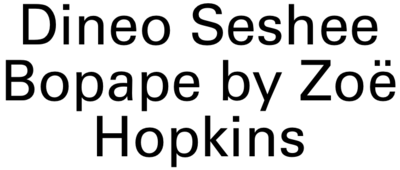
Dineo Seshee Bopape, Interview by Zoë Hopkins | via BOMB Magazine,
-

Khalil Rabah, Palestinian Museum of Natural History and Humankind: a cultural revolution by Francesco Liggieri | via Juliet Art Magazine,
-

Tarik Kiswanson, Awarded The Marcel Duchamp Prize 2023 | via monopol,
-
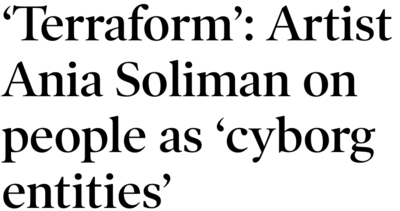
Ania Soliman, ‘Terraform’: Artist Ania Soliman on people as ‘cyborg entities’ by Jim Quilty | via L´Orient Le Jour,
-

Wael Shawky, Songs of becoming and drowning by Jim Quilty | via L´Orient Le Jour,
-

Ania Soliman, la nature à travers l’écran et l’écran à travers la nature by Gilles Khoury | via L´Orient Le Jour,
-
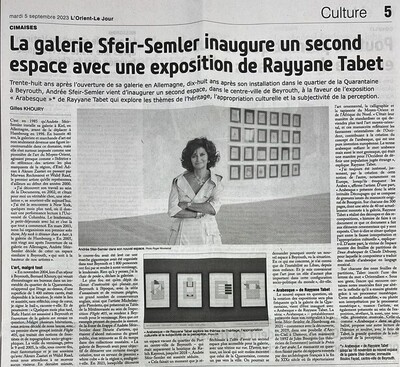
Dr. Andrée Sfeir-Semler, La galerie Sfeir-Semler inaugure un second espace avec une exposition de Rayyane Tabet by Gilles Khoury | via L´Orient Le Jour,
-

Rayyane Tabet, La galerie Sfeir-Semler inaugure un second espace avec une exposition de Rayyane Tabet by Gilles Khoury | via L'Orient-Le Jour,
-
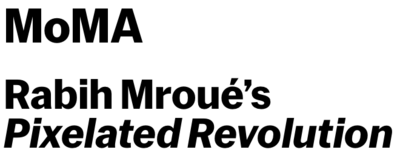
Rabih Mroué, Rabih Mroué’s Pixelated Revolution by Ana Janevsky, May Makki | via MoMa,
-

Rayyane Tabet, Civil war looting, American justice and a bull's head by Jim Quilty | via L´Orient Le Jour,
-

Rayyane Tabet, Le Grand Retour de Rayyane Tabet by Gilles Khoury | via L´Orient Le Jour,
-

Sung Tieu, Alternative Investments by Catharine Quan Damman | via Artforum,
-

Samia Halaby, PAINTING AND THE PERSONAL COMPUTER by Alex Estorick | via Rick Click Save,
-

Dana Awartani, Dana Awartani on using craft—which is ‘seen as a bad word’ by Lee Cheshire | via The Art Newspaper,
-
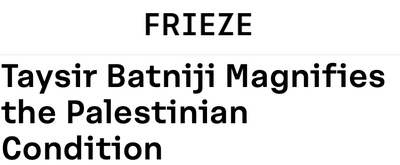
Taysir Batniji, Taysir Batniji Magnifies the Palestinian Condition by Nadine Khalil | via Frieze,
-

Akram Zaatari, Interview by Julia Kozakiewicz | via The White Review,
-

Samia Halaby, L’énergie vitale des couleurs chez Samia Halaby et Farid Haddad by Danny Mallat | via L´Orient Le Jour,
-
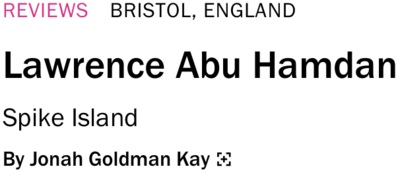
Lawrence Abu Hamdan, on 45th Parallel at Spike Island, Bristol by Jonah Goldman | via Artforum,
-
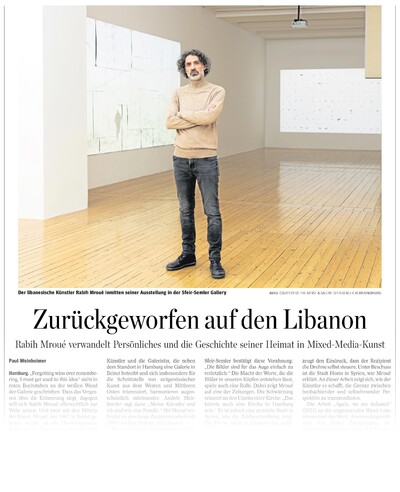
Rabih Mroué, Zurückgeworfen auf den Libanon by Paul Weinheimer | via Hamburger Abendblatt,
-

Samia Halaby, De-coding Colors | via Selections,
-

Samia Halaby, Entre avant-gardisme et perfectionnisme: l'univers de Samia Halaby by Lise Picquette | via agenda culturel,
-

Samia Halaby, Le dialogue des formes et des couleurs by Nayla Tamraz | via Ici Beyrouth,
-

Ania Soliman, L’art pour repenser notre rapport à la nature et à la technologie by Amaya Singh | via agenda culturel,
-

Mounira Al Solh, What Makes and Breaks Community by Mark Rappolt | via Art Review,
-

Ania Soliman, Terraform: une poétique de la machine et du vivant by Nayla Tamraz | via Ici Beyrouth,
-
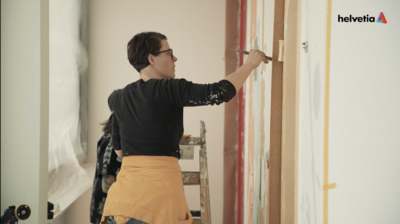
Christine Streuli, Christine Streuli on her permanent installation in Basel,
-
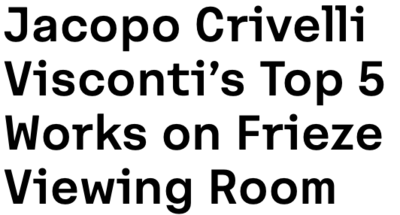
Sung Tieu, Top 5 Works on Frieze Viewing Room by Jacopo Crivelli | via Frieze,
-

Mounira Al Solh, Embroidering a monument to women’s stories and sorrow by Juliana Halpert | via Artforum,
-
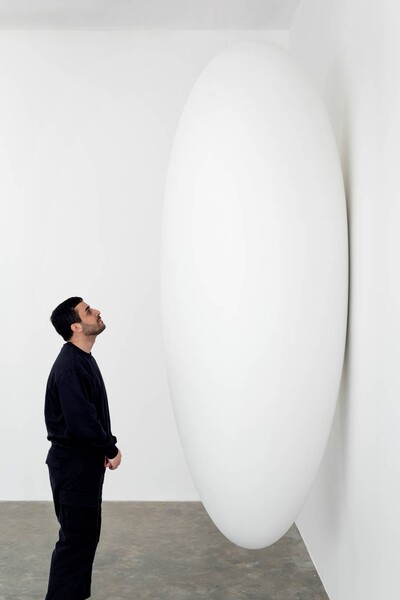
Tarik Kiswanson, installe son « Nid » à la galerie Sfeir-Semler by Zéna ZALZAL | via L´Orient Le Jour,
-
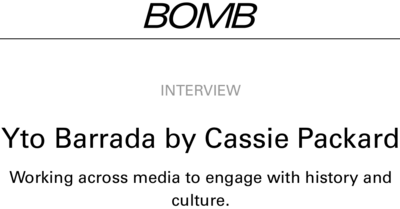
Yto Barrada, Weather and Wordplay by Cassie Packard | via BOMB,
-

Aref El Rayess, Beirut and the Golden Sixties by Ingo Arend | via Süddeutsche Zeitung,
-

Rabih Mroué, What to See in Europe this April by Carina Bukuts | via Frieze,
-

Dineo Seshee Bopape, Immersive Mythen: Dineo Seshee Bopape in der Secession by Quirin Brunnmeier | via gallerytalk,
-

Walid Raad, "Was ist wahr, was ist Fiktion?" by Kassandra da Silva | via Schirn,
-
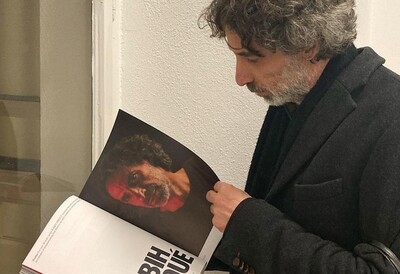
Rabih Mroué, Why Rabih Mroué Seeks to Complicate our Perception of Reality and Truth by Carina Bukuts | via Frieze,
-
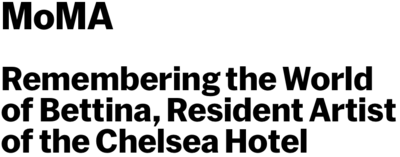
Yto Barrada, Remembering the World of Bettina, Resident Artist of the Chelsea Hotel. Interview with Yto Barrada by Lucy Gallun,
-

Walid Raad, "We lived so well together" by Michael Köhler | via Deutschlandfunk,
-

Walid Raad, Der libanesische Künstler Walid Raad in der Kunsthalle Mainz by Schmitz Rudolf | via Deutschlandfunk Kultur,
-

Etel Adnan, IN SHIFTING THE SILENCE by Kaelen Wilson-Goldie | via Artforum,
-

Yto Barrada, A Bordeaux, les fleurs jouent les premiers rôles dans l’art contemporain by Emmanuelle Lequeux | via Le Monde,
-

Etel Adnan, The uprising of colors by Zéna ZALZAL | via L´Orient Le Jour,
-
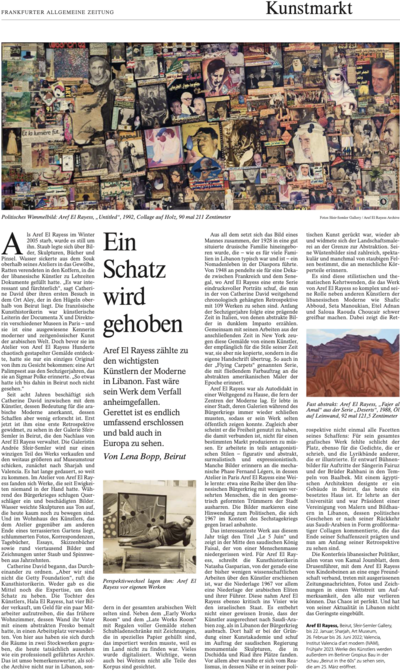
Aref El Rayess, Ein Schatz wird gehoben by Lena Bopp | via Frankfurter Allgemeine Zeitung,
-
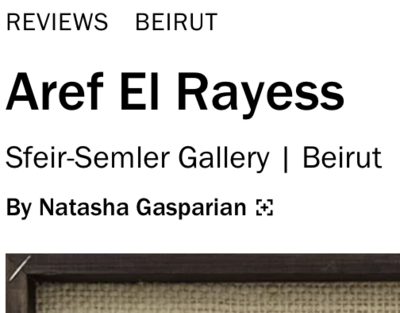
Aref El Rayess, Retrospective by Natasha Gasparian | via Artforum,
-

Etel Adnan, Etel Adnan’s Bittersweet Arrival at the Guggenheim by Max Lakin | via The New York Times,
-

Christine Streuli, Für das journal 12 traf die Klasse Streuli ihre Professorin zum Gespräch by Klasse Streuli | via Universität der Künste Berlin,
-

Lawrence Abu Hamdan, "The Witness-Machine Complex" im Kunstverein Nürnberg. Das Schweigen der Mitschrift. by Gürsoy Doğtaş | via Süddeutsche Zeitung,
-
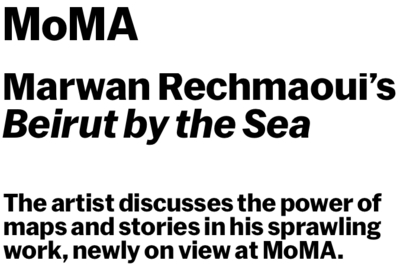
Marwan Rechmaoui, Beirut by the Sea by Paulina Pobocha | via MoMa,
-

Etel Adnan, an Introduction by Hans Ulrich Obrist by Hans Ulrich Obrist | via Flash Art,
-

Sung Tieu, On Havana Syndrome by Chloe Stead | via Frieze,
-

Lawrence Abu Hamdan, on translation, Nuremberg, and the juridical unconscious by Camila McHugh | via Artforum,
-

Sung Tieu, 2021 Frieze Artist Award by Kabir Jhala | via The Art Newspaper,
-

Dineo Seshee Bopape, Dineo Seshee Bopape: Ile aye, moya, là, ndokh…harmonic conversions…mm at ICA VCU, Richmond | via Burnaway,
-
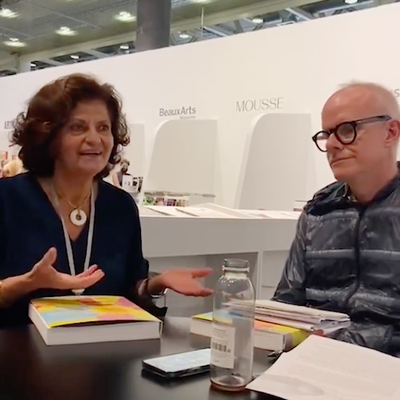
Dr. Andrée Sfeir-Semler, in conversation with Hans Ulrich Obrist presenting ETEL ADNAN’s book at Art Basel,
-

Sung Tieu, Preis der Nationalgalerie 2021 by Sandra Mujinga | via Staatliche Museen zu Berlin,
-

Dineo Seshee Bopape, Dineo Seshee Bopape on How Art Comes to Life by Ross Simonini | via ArtReview,
-

Etel Adnan, Hans Ulrich Obrist interviews the artists and long-time partners Etel Adnan and Simone Fattal by Hans Ulrich Obrist,
-
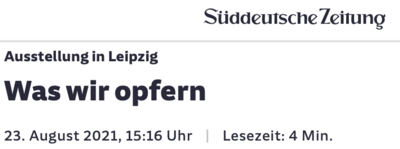
Sung Tieu, Was wir opfern by Kito Nedo | via Süddeutsche Zeitung,
-

Sung Tieu, "Research is never neutral" | via Berlin Art Week,
-
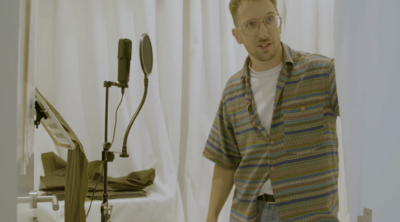
Lawrence Abu Hamdan, Meet the artist by Art Basel | via Nowness,
-
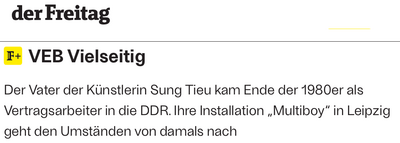
Sung Tieu, VEB Vielseitig by Heike Baldauf | via Der Freitag,
-
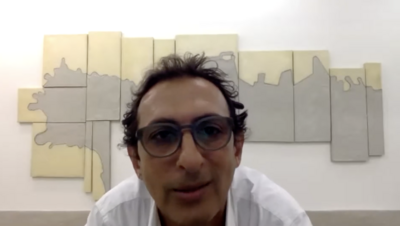
Marwan Rechmaoui, Talk between Glenn Lowry (MoMA New York) and Marwan Rechmaoui by Glenn Lowry | via MoMa,
-

Etel Adnan, L’œuvre au fil by Zéna ZALZAL | via L´Orient Le Jour,
-
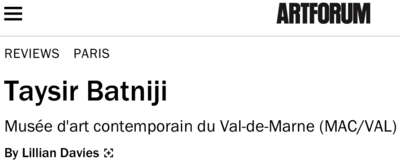
Taysir Batniji, Review: Taysir Batniji by Lilliane Davies | via Artforum,
-
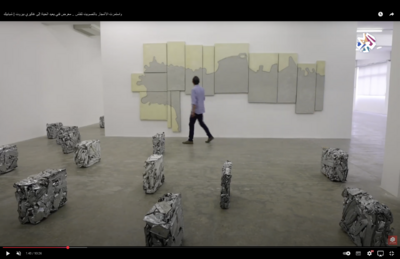
Marwan Rechmaoui, واستمرت الأشجار بالتصويت للفأس .. معرض فني يعيد الحياة إلى غاليري بيروت by Al Araby TV | via Al Araby Television Network,
-
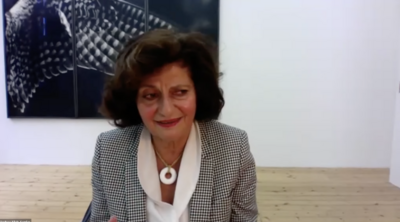
Dr. Andrée Sfeir-Semler, RotarX S2E6 - Contemporary Art in the Arab World, Q&A with Jean-François Parmentier and Dr. Andrée Sfeir-Semler by Jean-François Parmentier,
-

Taysir Batniji, L'œuvre poétique de Taysir Batniji, un artiste palestinien qui évoque l'exil, la quête d'identité, la disparition, au MAC/VAL à Vitry-sur-Seine by Valérie Oddos,
-
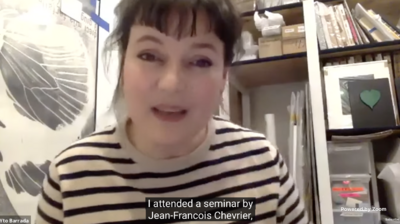
Yto Barrada, Discussing "A Raft", Yto Barrada's iteration of MoMA’s Artist’s Choice exhibition series by Lucy Gallun, River Bullock,
-

Marwan Rechmaoui, Aber die Bäume riefen nach der Axt by Lena Bopp | via Frankfurter Allgemeine,
-
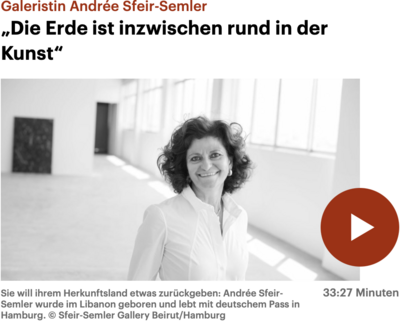
Dr. Andrée Sfeir-Semler, "Die Erde ist inzwischen rund in der Kunst" by Susanne Führer | via Deutschlandfunk Kultur,
-

Dr. Andrée Sfeir-Semler, "Die Künstler haben sehr gelitten" by Sebastian Frenzel | via Monopol,
-
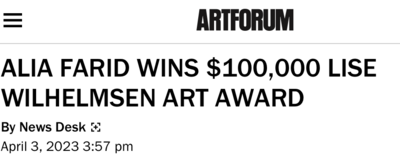
Alia Farid, Review: Alia Farid by Lilliane Davies | via Artforum,
-
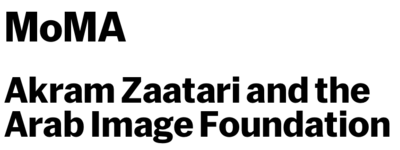
Akram Zaatari, Akram Zaatari and the Arab Image Foundation by Eva Respini, Ana Janevski | via MoMa,
-

Etel Adnan, The World from rue Madame: Celebrating Etel Adnan by Pablo Larios | via Frieze,
-

Wael Shawky, CELEBRATING THE MIDDLE AGES by Wael Shawky | via Selections,
-

Rayyane Tabet, LET THE RECORD SHOW by Kaelen Wilson-Goldie | via Artforum,
-

Rayyane Tabet, on Robert Smithson | via Dia,
-

Lawrence Abu Hamdan, The Voice Before the Law by Ina Dinter | via Staatliche Museen zu Berlin,
-
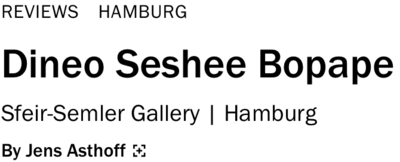
Dineo Seshee Bopape, Review: Dineo Seshee Bopape by Jens Asthoff | via Artforum,
-

Etel Adnan, May Be the World’s Greatest Living Colorist by Harry Tafoya | via KQED,
-

Akram Zaatari, Reframing the Public Perception of Muslim Identities by Kaddish Morris | via Frieze,
-

Dineo Seshee Bopape, A South African Artist Made an Ex-President’s Rape Trial into Art by Josie Thaddeus-Johns | via Vice,
-

Aref El Rayess, My father, a giver who brought out the best in me | via Art Dubai,
-

Mounira Al Solh, Drawing Lessons From A Living History by Elliot Reichert | via New City Art,
-

Khalil Rabah, in L'Orient Le Jour by Gilles Khoury | via L´Orient Le Jour,
-
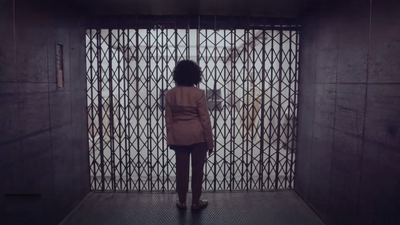
Dr. Andrée Sfeir-Semler, Meet the Gallerist | via Art Basel Miami Beach,
-

Ania Soliman, Ania Soliman interviewed in her studio by Art Dubai,
-

Christine Streuli, Schweizer Malerin: Christine Streuli erhält den Fred-Thieler-Preis by Nina Raddy | via Tagesspiegel,
-

Youssef Abdelké, The artists who have chosen to stay in Syria by Tim Cornwell | via The Art Newspaper,
-

MARWAN, Marwan Kassab-Bachi (1934-2016) by Omar Kholeif | via Artforum,
-

MARWAN, Akademie der Künste trauert um Marwan Kassab-Bachi by Jeanine Meerapfel | via Akademie der Künste,
-
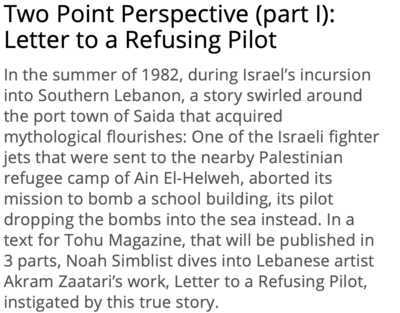
Akram Zaatari, Two Point Perspective (part I): Letter to a Refusing Pilot by Noah Simblist,
-
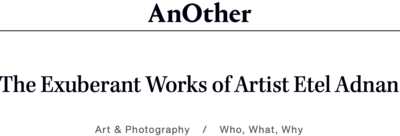
Etel Adnan, The Exuberant Works of Artist Etel Adnan by Jeanette Farrell | via Another,
-
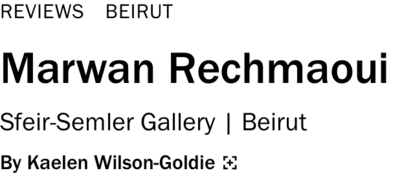
Marwan Rechmaoui, Marwan Rechmaoui by Kaelen Wilson-Goldie | via Artforum,
-

Yto Barrada, Nominees for the 2016 Prix Marcel Durchamp by Lorena Muñoz-Alonso | via artnet,
-
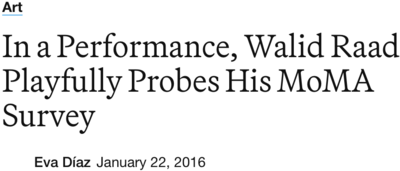
Walid Raad, In a Performance, Walid Raad Playfully Probes His MoMA Survey by Eva Díaz | via Hyperallergic,
-

Walid Raad, Retrospective by Holland Cotter | via The New York Times,
-

Robert Barry, Interview with Robert Barry by Peter Eleey | via Flash Art,
-

Robert Barry, Robert Barry: All the things I know ... 1962 to present by Alexandra Nicolaides | via The Brooklyn Rail,
-

Etel Adnan, The 90-Year-Old It Girl | via The Wall Street Journal,
-

Akram Zaatari, Zaatari and Madani: Guns, flared trousers and same-sex kisses by Vibeke Venema | via BBC,
-

Youssef Abdelké, A Climate of Unease for Artists in Syria by Michael Kimmelman | via New York Times,
-
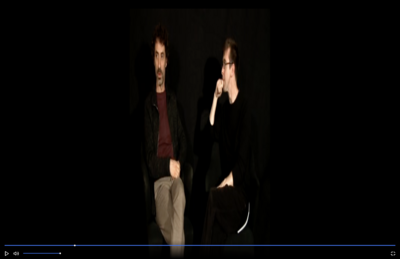
Rabih Mroué, Interview mit Rabih Mroué am HKW by Alan Toner,
-

Akram Zaatari, Openings: Akram Zaatari by Kaelen Wilson-Goldie | via Artforum,
-
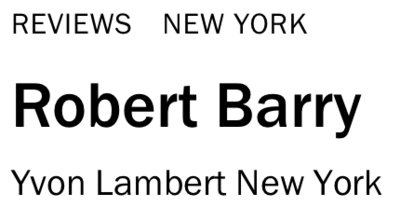
Robert Barry, Review: Robert Barry by Lisa Turvey | via Artforum,
-
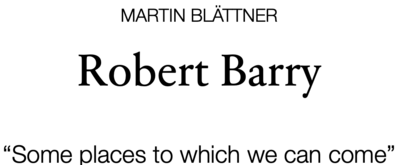
Robert Barry, “Some places to which we can come” by Martin Blättner | via Kunstforum,














































































































































































































